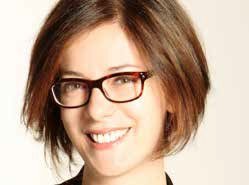Designed in IT
by Silvana ANNICCHIARICO
The Triennale focuses on new Italian design while redefining its scope
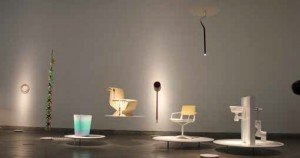
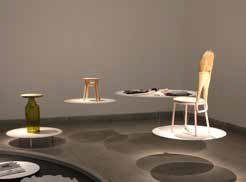

Every now and then one finds oneself, sometimes inadvertently, on the traces of what is new, putting on a pair of old, worn glasses and adopting points of view that may well be tried and tested, but that are not always able to grasp the transformations under way. In 2007 Triennale Design Museum presented The New Italian Design, an exhibition that has the primary aim of avoiding this error – in other words, it intends not to fall into the trap of necessarily compressing the new into the already known. Trying not to lock up the present in the theoretical and conceptual paradigms that have made it possible to read and interpret the past.
That in many ways pioneering exhibition arose out of an evident methodological rift. One that was debatable, possibly, but conscious and explicit: the conviction that in order to form a picture of the new scenarios and new practices of Italian design, it was better not to rely first and foremost on the intuitions, decisions and suggestions of some demi-god curator, but rather to start out from collective consultation in order to create a detailed map of the complex, ever-changing world it was facing.
As though building a social network, advisors, companies and institutions were all involved and applications were requested. The invaluable work of nominations that had been carried out in previous years was taken up again and given systematic form, taking from trade magazines and from the SaloneSatellite in a constant, consistent way.
Masters of design, researchers and scholars were all questioned and dialogue was entered into with schools, universities and training centres. In the end, the selection committee chaired by Andrea Branzi – a Master who, not coincidentally, was interested in investigating the processes put into effect by the generations that came after his own – examined all the nominations and completed them with the information he already had at his disposal. This was followed by the selection of the designers – both individuals and groups – who were then invited to take part in the exhibition.
The map did not just concern furniture design but examined a far more ample area, in order to pinpoint all the new forms – from food to communication – that design had been entering into in recent years. There were not just traditional product designers but also those who worked on the web, graphics, fashion and textiles, as well as copywriters, jewellery designers, multimedia designers and those who create play environments and who work with digital images, through to those who work with style and narrative.
In other words, all-round designers: not just architect-designers but also art directors, consultants, and service and communication organisers, up to those who carry out research and experiments.
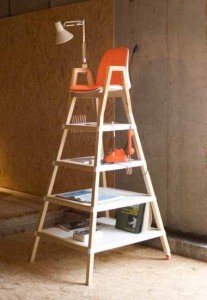


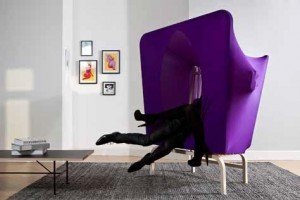



In a country that continues to be basically gerontocratic and that does little to promote generational replacement and the so called “young”, we felt there was a pressing need to give voice, space and visibility to young Italian creativity, refuting the cliché that design ended with the close of the twentieth century. The first result of this work was the creation of a database, which is now available not just for the institutional activities of the Triennale Design Museum but also for companies, institutions and, more in general, for the whole design system.
This map was of course still partial and incomplete, and inevitably patchy. But precisely because this was clear to us, we took it upon ourselves to implement this database and to improve it constantly over time.
The New Italian Design arose out of this ongoing work to implement and complete it, and it has led to a map being drawn up of young Italian creativity through to the present day.
After travelling to Madrid (2007), Istanbul (2010), Beijing and Nantou (2012), Bilbao, San Francisco and Santiago Chile (2013), The New Italian Design presents a selection of 282 projects by 133 designers. The selection covers a very multifaceted panorama, ranging from furniture design to communication design, through to food, the web, jewellery and graphics, in a broad, organic vision – as we were saying – of the creative processes of design. The objects on show range from mass-produced objects to small self-productions, often close to handicraft work. But the contrast between self-production and mass production is not key to this exhibition. Rather, self-production, experimentation and research actually give energy and life to industry, which itself encourages experimentation.
Contemporary design is to be found in a decidedly different model from the one that dominated in the age of the “Masters”. In those days, design culture aimed to create finished, functional products, whereas today – in what has in a certain sense become a “mass profession” – design generates processes more than products, and appears primarily as a form of self-representation of the designer’s ability to imagine, create and innovate.
Today’s new designers are neither the heirs nor the pupils of the various Munaris, Magistrettis and Castiglionis. They are something else. Insisting on thinking of them as “little” masters means expecting to be able to continue forcing them parasitically into twentieth-century paradigms that no longer hold true. It means doing an injustice to them and to their diversity and originality, as well as to the design system as a whole. Finding one’s way around the new, ever-changing world of Italian design, which is made of team effort and horizontal movements more than individual, vertical actions, requires no nostalgia for a golden age that has had its time.
What is needed is a new ability to explore and take risks, and possibly even lose one’s way, only to find it again. The New Italian Design exhibition by Triennale Design Museum is an attempt to move in this direction.
About the Author
As an architect, in addition to professional activities, Silvana Annicchiarico is involved in the fields of research, criticism and teaching. Since 2007 she is the Director of Triennale Design Museum. From 1998 to 2007 she was Custodian of the Permanent Italian Design Collection of La Triennale di Milano, since 2002 she has been a member of the Scientific Committee of the design sector, from 1998 to 2004 she held a temporary post as a Professor within the Degree in industrial design of the Politecnico di Milano. From 1998 to 2001, she was assistant editor of the monthly design magazine “Modo”, and she collaborated with several newspapers and radio stations and is the editor of exhibitions and books both in Italy and abroad. She is a member of the Triennale di Milano Scientific Committee for Design, Manufacturing and Handicraft.

